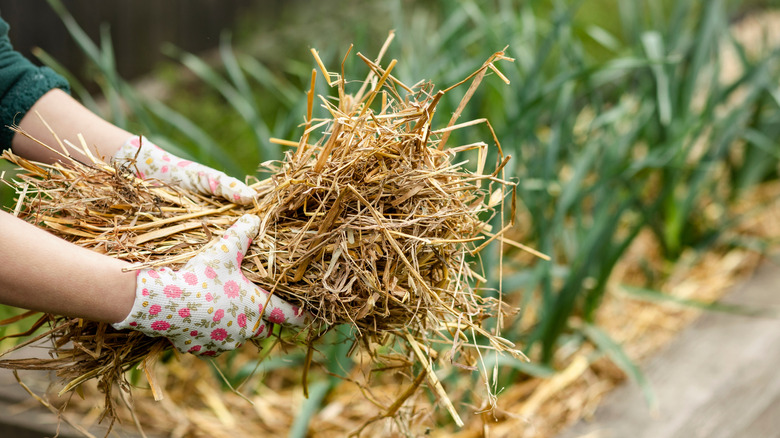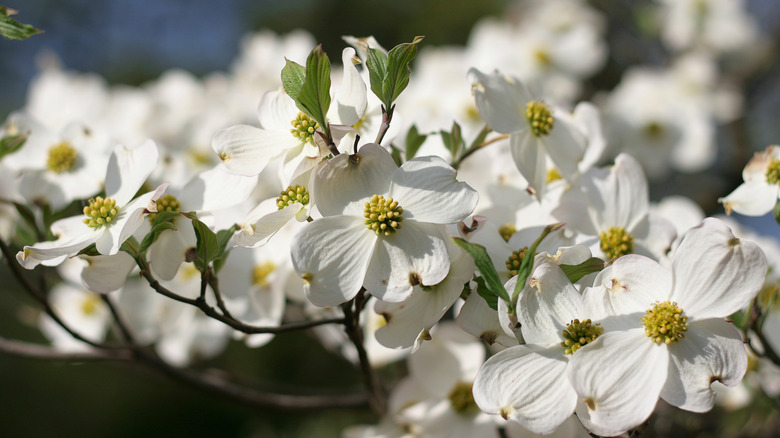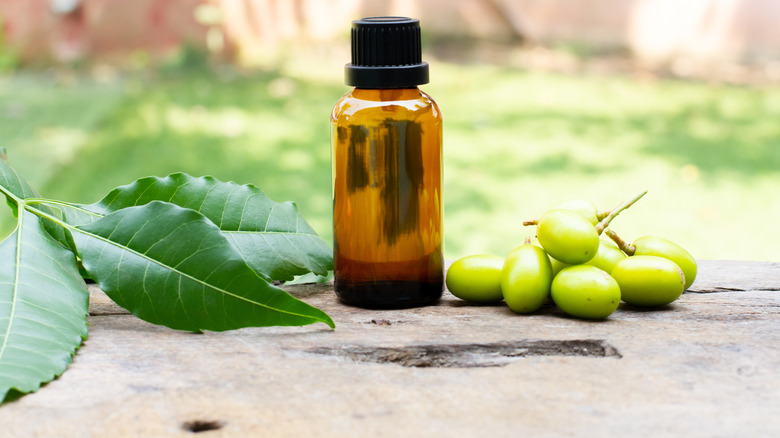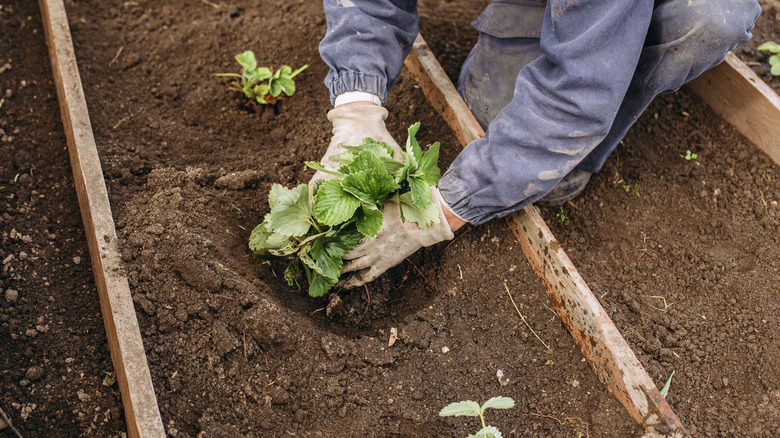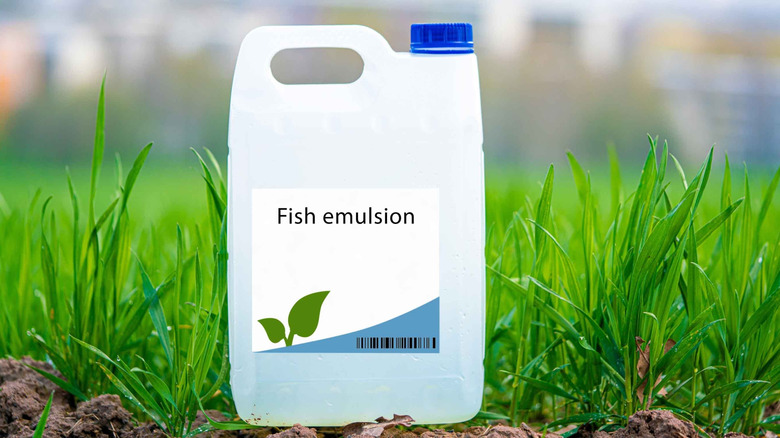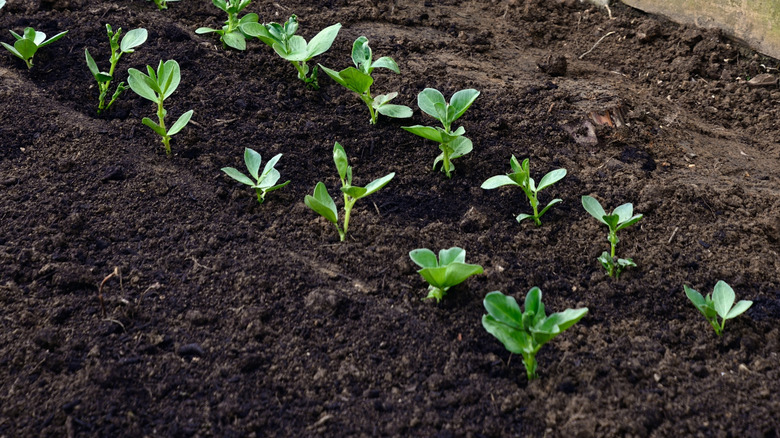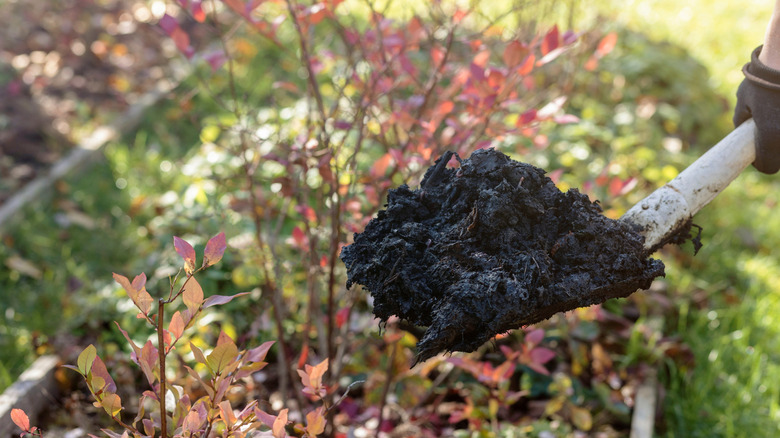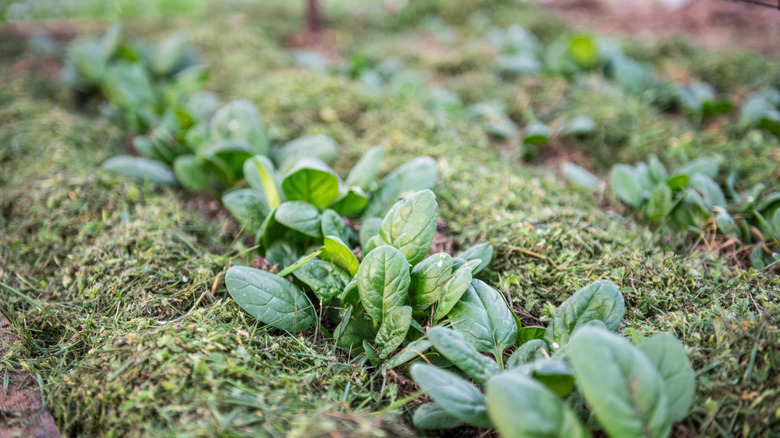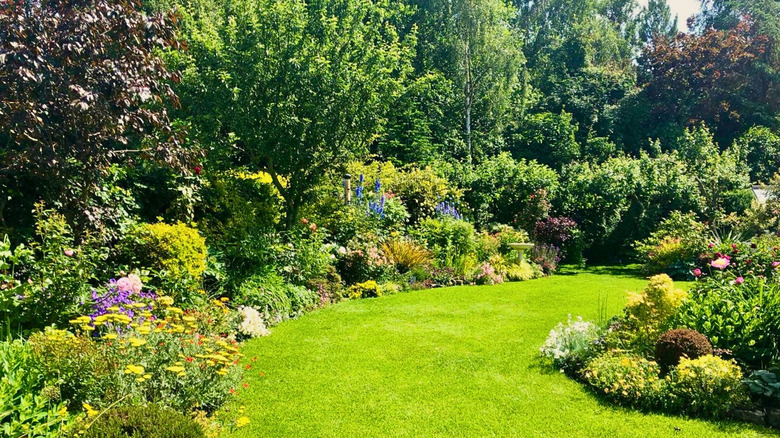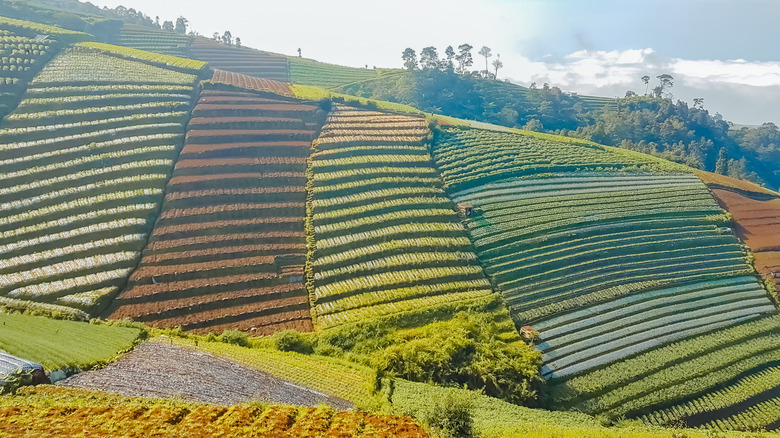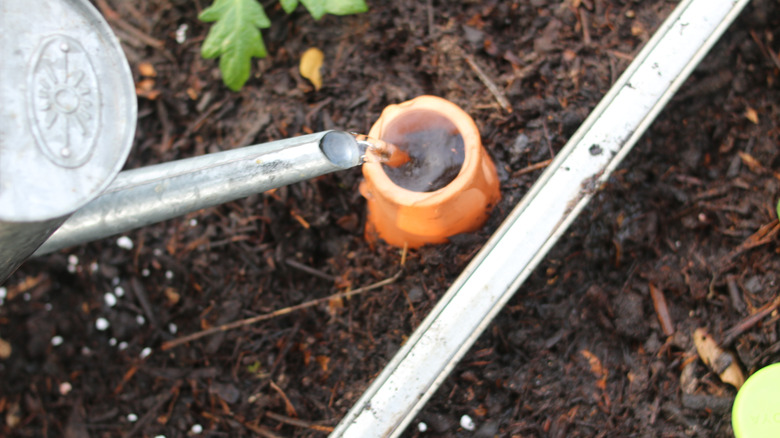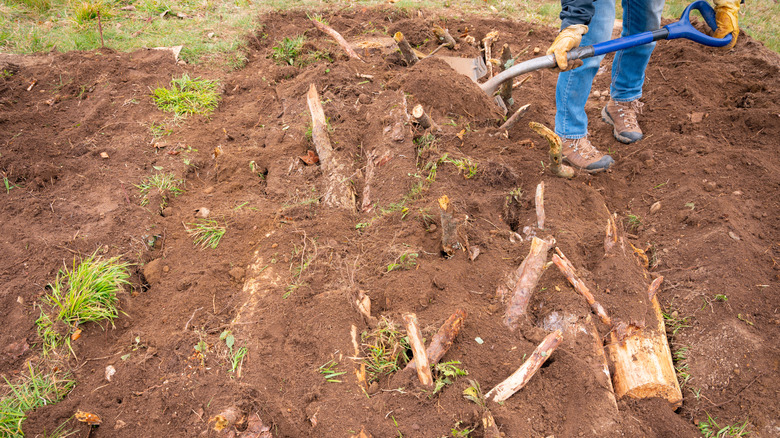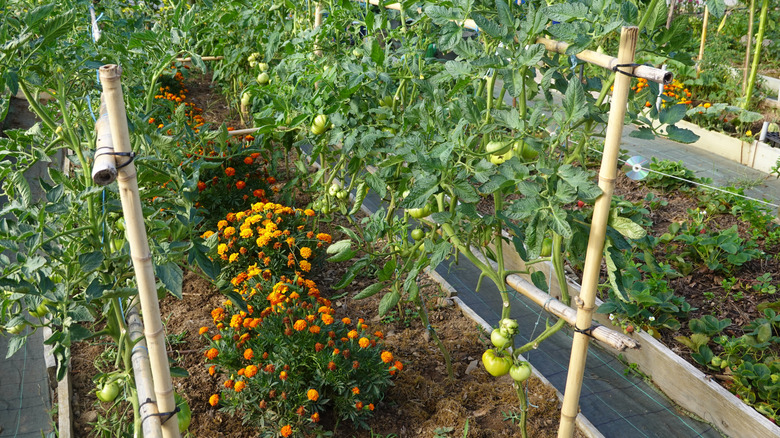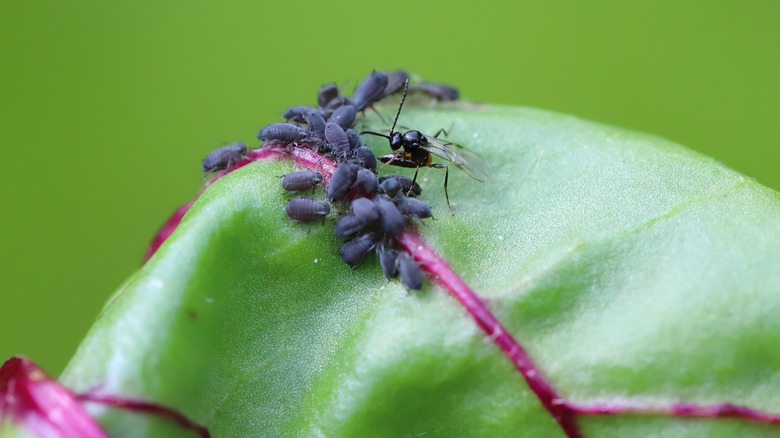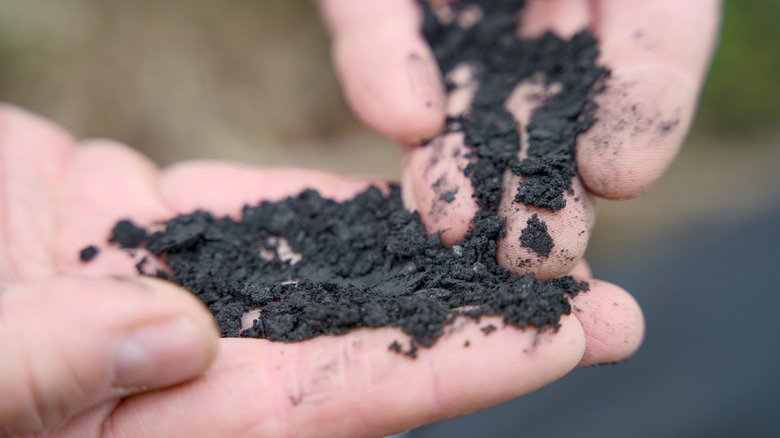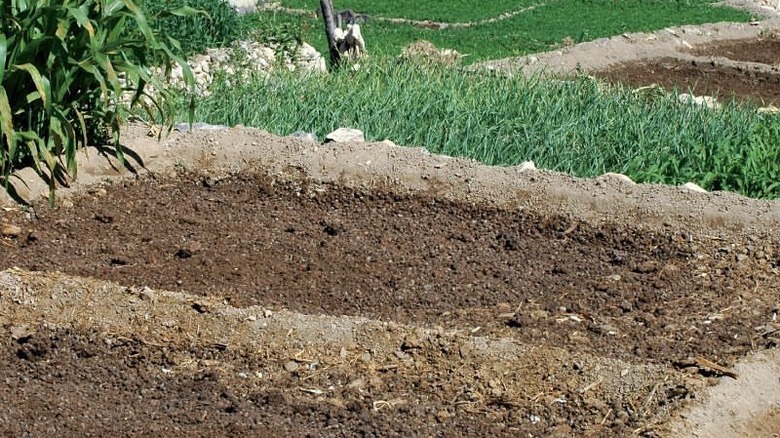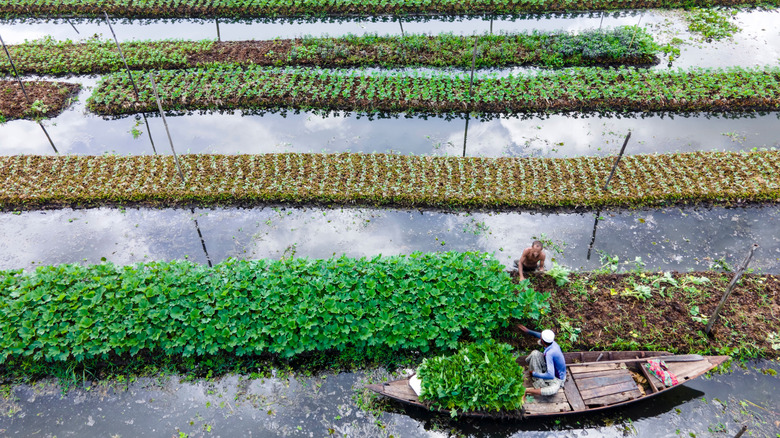16 Ancient Techniques That Deserve A Place In Your Garden
Modern technology has changed the way we garden, but some of the best techniques are those used thousands of years ago. Many ancient societies were deeply connected to nature, and their practices can inform how we garden today. These methods can minimize pollution, save water, encourage biodiversity, and protect beneficial insects like pollinators. When you work with nature, you'll be rewarded with a sustainable garden that's easier to manage, is more resilient, and doesn't rely on costly tools or products.
Although many of today's practices can be harmful to the environment, ancient civilizations often employed eco-friendly techniques that naturally conserved water, kept soil fertile, and produced healthy crops, without the use of chemicals. Because they didn't have access to running water or gardening centers, our ancestors paid close attention to seasonal changes, the way plants and animals interacted, and other patterns to find ways to grow their crops and feed their communities. While some techniques may sound like old wives' tales, many modern farmers still rely on them, and research continues to prove just how effective they still are today.
Using phenology will help you learn the best time to plant
Phenology is the study of plant and animal cycles relating to climate, like birds migrating or flower buds emerging on branches. Paying attention to nature's cues dates back centuries, with the first recorded mention of phenology dating back to 974 B.C. Early farmers would track the blooming of wild plants or the return of migrating animals as indicators for the best time to sow crops. For example, plant tomatoes when dogwood trees are in full bloom, or plant corn once oak leaves reach the size of a squirrel's ear.
With the weather being so unpredictable, sometimes nature can provide better cues than your calendar can. Pay attention to environmental changes, like when different types of flowers bloom, birds migrate back, or certain pests begin to appear. It may take some time to gather information, but over time, you'll begin to notice a few consistencies. This data can be invaluable for avoiding climatic surprises, as conditions on the same date can look completely different from one year to the next.
Botanical pest control is a more eco-friendly pesticide alternative
Conventional pesticides can tackle some of the most common garden issues, but they also break down slowly, contaminate soil and water, kill pollinators and other beneficial insects, disrupt food chains, and decrease biodiversity. One of the best eco-friendly ways to keep bugs out of your garden is to switch to botanical pest control. Plants produce natural chemical defenses to ward off pests, and when extracted, these compounds can be used to control pests throughout the garden. The use of botanicals dates back to at least the Roman Empire, though extraction methods and formulations have continued to evolve for centuries. Not only are they highly effective, but they also break down rapidly, making them much safer for the environment.
One of the most common natural pesticides on the market is neem oil. It's incredibly safe, even when used on edible plants. That said, though it may be gentle on the garden, it's ruthless against 100 types of insects. Neem oil contains the compound azadirachtin, which disrupts insect hormones and life cycles, and deters them from eating the plant. Do note, though, that neem oil is less successful on aphids.
Rotating crops can increase crop yields
Crop rotation is the strategy of planting different crops year after year in the same plot. Ancient Roman gardeners used a system they called "food, feed, fallow," in which they rotated food crops, livestock plants, and empty plots. Even today, most farmers have some sort of crop rotation plan. Because most pests and diseases target specific plant families, rotating crops prevents them from multiplying in the soil and infesting their target hosts year after year. Crop rotation also prevents nutrient depletion in the soil, as different plants use different nutrients.
Rotating your vegetable crops is easy, and it's a great way to avoid pests and diseases, while making the most of your soil. Create a list of the plant families you plan to grow and move them to a new plot each growing season. For example, if you're growing carrot family plants in section one, you'll plant them in section two the following year.
Fish emulsion provides plants with a natural source of nutrients
Using fish as fertilizer actually dates back to ancient times, when civilizations such as the Egyptians, Incas, and Mayans used fish residues to fertilize their crops. Native Americans would also feed their crops by burying a small fish in the ground and planting corn seeds on top. As the fish decomposed, it slowly released nutrients that fed their crops throughout the growing season. Although the process is more modernized now, the concept remains the same. Today, unusable fish parts are treated and processed into fish emulsion. These fish-based fertilizers contain all primary nutrients and several trace elements plants need — including nitrogen, phosphorus, potassium, calcium, magnesium, sulfur, and more — and can also improve soil fertility by feeding soil microbes.
You can find fish emulsion in nearly any retail or gardening store where you'd typically purchase fertilizer. There are several types available, and they typically need to be diluted in water, so make sure to follow the instructions listed on the package. It does smell a little fishy, so it's best for outdoor plants, unless you don't mind your houseplants giving off a scent that's reminiscent of a bait shop.
No-till gardening protects soil structure and beneficial organisms
The first-known form of no-till gardening dates back to 8000 B.C., when farmers would use planting sticks to loosen the soil just enough to form small holes for seeds. Although tilling eventually became the go-to method for most farmers and gardeners, many are now realizing it can cause more harm than good. While tilling initially aerates the soil, it can eventually lead to compaction and can cause a hard layer to form beneath the surface, which can restrict water flow. It also disturbs beneficial organisms that are necessary for healthy soil.
If you want to start a no-till garden, use a gentler tool, like a broad fork, which loosens the soil without disrupting the entire underground ecosystem. Enriching the soil is key, so maintain a layer of organic mulch over your planting area during both the growing and off-seasons. Alternatively, you can amend your soil with compost at the beginning of spring.
Manure composting adds valuable nutrients back into the soil
Manure composting is one of the oldest gardening practices, possibly going as far back as the Neolithic period. Evidence found from archaeological digs suggests that early farmers in Scotland (and possibly England) would use composted waste and other organic materials as a nutrient-rich growing medium. Composted animal manure is one of the best soil amendments, because it's loaded with nutrients that crops need to thrive.
Opt for properly composted animal waste, rather than any form of raw manure. Even if it's aged, it can still carry pathogens, like E. coli, which can spread to your crops. Although possible, it's difficult to compost manure yourself, as the process is more intensive than composting other materials. When done correctly, the manure goes through a temperature-monitored process that eliminates pathogens and weed seeds. Avoid purchasing any composted manure that hasn't been heat-treated and cured, is damp or wet, has a sewage-like odor, or contains non-decomposed materials, trash, or debris.
Organic mulching improves soil health and helps control weeds
Mulch has been a staple for centuries. Some estimate it was first used in the 1700s, though evidence shows the practice of organic mulching going back even further. Ancient Romans would fertilize their soil with composted waste or leaves, straw, chaff, husks, and other decaying plant matter. Although inorganic mulch has its place, organic materials slowly decompose over time, improving the soil texture and feeding beneficial microorganisms that release nutrients back into the soil.
There are several types of organic mulch you can purchase, including wood chips, shredded bark, and straw. However, you can find free, eco-friendly mulch options right in your backyard. Fallen leaves, dried grass clippings, and pine needles all make great options to suppress weeds, retain soil moisture, improve soil texture, and enrich the soil. Start with a 2- to 4-inch layer of much on top of the soil, and once it decomposes, you can work it into the soil.
Forest gardening creates a thriving ecosystem in small spaces
The practice of forest gardening, or layering plants in a natural, forest-like structure, dates back around 8,000 years in the Neotropics. In fact, the Mayan forest, the largest tropical rainforest in the Americas, still thrives today in part because of the ancient civilization's influence, though modern development has led to ongoing deforestation across parts of the region. That said, the technique continues to be one of the best ways to create a diverse ecosystem, even if you're working with a smaller space.
To create a forest garden, mimic the natural forest layering of overstory trees, understory trees, shrubs, herbaceous crops, ground covers, root crops, vines, and fungi. By creating this pattern, you can grow all kinds of crops together, including fruit trees, veggies, herbs, and ground covers, that work together instead of competing for space. This natural layout also offers habitat for wildlife, attracts beneficial insects, such as pollinators, and can help improve soil health.
Terracing reduces erosion and water runoff on slopes
Thousands of years ago, ancient farmers had to get creative if they wanted to reduce erosion and run off on slopes, especially those living in hilly regions. The solution they came up with was called terracing, where they would work with the lay of the land and essentially cut their gardens into a stair-like pattern. Each "step" would slow down the flow of water, so it would soak into the soil, rather than washing away. It also gave them flat surfaces that made it easier to grow their crops.
Traditional terraced plots may have once covered vast farmlands, but you can easily mimic this strategy on a smaller scale in your own hilly backyard. If you're up for a challenge, plan and build the beds yourself, though hiring a professional is often easier. Before getting started, check for underground utilities and sketch a basic layout of your desired design.
Olla irrigation is one of the best ways to conserve water
Thousands of years ago, ancient gardeners from around the world would use clay pots, called ollas, to irrigate their soil. They'd bury the ollas, leaving the top exposed to fill with rainwater. Then, the water would seep out the pores of the pot, slowly adding moisture to the surrounding soil. Surprisingly, it can be even more efficient than modern irrigation systems, using 60% to 70% less water than conventional alternatives.
If you want to replicate this ancient gardening technique, you can often find ollas at gardening centers or online. Once you bury the pot, make sure to pack the nearby soil to eliminate any air pockets. Then, all you need to do is keep the water full and let the olla take care of the watering for you. Covering the top with a clay tray or lid can help prevent evaporation and keep mosquitoes from laying eggs in the water. In regions with little rainfall, make sure to remove the cover on those rare rainy days to let it fill up naturally.
Hügelkultur is low-maintenance and offers several soil benefits
Hügelkultur is a German word that translates to mound culture or hill culture, and is a gardening method that goes back hundreds of years. It's a sloped, raised garden bed, but instead of just filling it with soil, you start with a base layer of logs, branches, or sticks. Then, you pile on smaller organic materials like leaves, grass clippings, straw, and compost before topping it with soil. Over time, the plant matter underneath slowly decomposes, releasing nutrients back into the soil. The materials also absorb rainwater and gradually release it so that the bed retains moisture for longer, reducing the need for supplemental watering.
Choose a low-lying area of your yard where rainwater gathers to build your hügelkultur bed. Begin adding your organic materials, starting with the largest pieces on the bottom, and building upward with smaller branches. Fill in the gaps with leaves, grass, compost, and other smaller materials. Once your mound is at least a few feet tall, you can add a 2-inch layer of topsoil. Although it's immediately ready for planting, you may need to apply some fertilizer for an extra nitrogen boost in the first season, until the mound starts enriching the soil on its own.
Companion planting can create a hardier garden
Companion planting is a beneficial method where you group different plants together to provide mutual benefits, like attracting advantageous insects, repelling pests, improving the soil, or maximizing space. This way of gardening dates back to 200 BCE, and many gardeners still swear by it today. For example, nematodes can be a problem for pepper plants, but planting marigolds nearby can help repel them.
When designing the layout of your garden, do your best to arrange plant species together that benefit one another. If you're growing corn, beans, and squash, you can try the "three sisters" method. The corn acts as a trellis for the bean vines, bean plants fix nitrogen in the soil, and squash provides coverage that helps to prevent weeds and keep the soil moist. When dealing with garden pests, pair vulnerable species with a strong-scented plant to repel bugs naturally.
Biological pest control naturally reduces pest populations
Biological control works by using living organisms to naturally manage pests. It dates back 4,000 years, when Egyptians used domestic cats to control rodents. Over time, this idea of using living organisms to manage pests evolved, and Chinese citrus growers began placing ant nests in their trees to protect them from foliage-eating insects. Being environmentally friendly, cost-effective, and easy to do, biological control is a great option to keep pests at bay without using chemicals.
One way to implement this method is to attract beneficial insects, like parasitoid wasps, to your garden. While this may sound scary, this tiny wasp species is only dangerous to pests and doesn't sting humans. They feed on some of the most common garden invaders, including aphids, mealybugs, whiteflies, caterpillars, and even some pests' eggs. Plant flat-topped flower species like dill, Queen Anne's lace, or sweet alyssum to lure them into your garden. You can also purchase ladybugs and other predator insects to deal with infestations right away.
Biochar is a nutrient-rich soil amendment with several benefits
Did you know you can use charcoal to boost your garden? Amazonian dark earth soil, or terra preta, was a highly fertile, man-made soil found in the Amazonian basin, dating back to between 450BC and 950 AD. This soil was made up of charcoal, organic waste, and even broken pottery, suggesting that indigenous people played a role in its formation. This is especially remarkable, since most of the soil in the Amazon is nutrient-poor. Scientists have found a way to replicate the process to create what is now referred to as biochar. It provides many of the same benefits as the ancient soil, like improved moisture and nutrient retention, carbon storage, and the ability to filter out pollutants.
Biochar is available at many garden centers, but you can even amend your soil with other charcoals, like fireplace ash. It's best suited for soils that are typically found in the tropics, like well-draining, sandy soil. If you have heavy, clay-based soil, biochar may not provide the same benefits. Before using it on all of your crops, it's a good idea to test it out first to see how your plants respond.
Waffle gardening protects plants from wind and water runoff
You may have heard of or even tried to start a raised garden bed, but have you heard of a waffle garden? Rather than planting above the ground, the beds are sunk into the ground, resembling a waffle when assembled into a grid-like pattern. It's a method that was first introduced by the Zuni tribe, a Native American group that was looking for a way to garden in the desert. This technique worked well to conserve rainwater, provide shade for plants, and protect the crops from harsh winds.
This gardening method is best for those living in dry arid conditions, so if you're in a rainy region, you may want to skip this one. While clay soil is typically a nightmare to work with, it's actually the perfect material to create your barrier. Dig about 1 foot deep and create 1-foot-by-1-foot waffle-like squares with a 4-inch wall surrounding them. Then, all you need to do is give it a good watering and plant your seeds.
Floating gardens maximize space and need little supplemental watering
Chinampas, or floating gardens, are highly sustainable gardens that were initially built in shallow bodies of water. These systems were originally constructed around the 12th century in southern Mexico to grow crops in areas where land was limited. Because the plants had unlimited access to water, they could continue to thrive, even if there were dry spells.
If you have a pond in your yard, you can build your own modern version of a floating garden. Use twine to tie bamboo rods together to create a floatable bed. Then, line the platform with large leaves, like banana leaves, or a layer of straw. Now, you can add your soil and compost and begin planting your seeds. Once it's complete, your low-maintenance floating garden is ready to set sail (just make sure you have a way to reel it in when it comes time to harvest).
